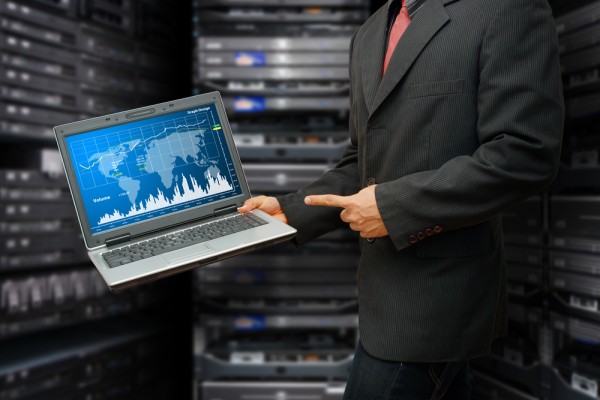Improving data center efficiency [Q&A]

With the growth of the cloud, data centers have become big business. In fact, it's estimated that they now use around 10 percent of the world's energy.
It's not surprising then that companies are looking to increase the efficiency of their IT operations, cut their energy use and reduce their carbon footprints. However, the solution to finding more efficiency may be closer than they think. Jeff Klaus, general manager of Data Center Solutions at Intel argues that enterprises need to look to home grown solutions before turning elsewhere. We spoke to him to find out more.
BN: Is energy efficiency something that gets overlooked in the planning of data centers?
JK: It's not that it gets over looked, but many IT Managers and Data Center Operators find it difficult to plan accordingly without all the relevant and necessary data. According to our recent survey, 32 percent of data center managers said they lacked enough actionable data that could be used in day-to-day decisions and in long-term capacity planning and forecasting. If manual planning takes 40 percent percent of their time and 1 in 5 data centers focus on using DCIM to optimize cooling efficiencies, then it is entirely possible that overall energy efficiency is sometimes overlooked. Although, cooling and energy efficiency are intrinsically connected, the optimization of each is completely dependent on the individual data center's IT manager.
BN: How important is effective monitoring to understanding the problem?
JK: As we know them, data centers are incredibly large and predicted to grow exponentially with the shift toward cloud based technologies. Monitoring is not only important but imperative to daily data center operations and long term efficiency. Continuous feedback from individual servers and blades helps data center managers act accordingly, before an issue occurs, in real-time to address problems and prevent more damage, or learn from insights after. Automated analysis and actionable data throughout all stages result in saving time, money and energy.
BN: Can things like increased rack density help?
JK: Increased rack density can help reduce the physical space in which a data center operates, but without proper maintenance the tightly packed servers still consume enormous amounts of energy, even when idle. DCIM solutions leverage automation, and real-time telemetry data provides a 360-degree view of the data center at a server and rack level. Managers can then determine when to increase temperatures by a few degrees, or when to divert energy away from servers that are not being utilized.
BN: How quickly can enterprises see benefits from optimizing their power usage?
JK: A lot depends on the size of the enterprise's data center and the scope of DCIM implementation. The average cost per outage is $28,900 and average time to recover is around 8 hours. However, only 59 percent of data center managers can quantify the costs associated with outages. Ideally, by implementing a holistic solution, companies could see immediate benefits from optimizing their power usage. There is an upfront investment from the enterprise to increase efficiency, but in the long run, a data center manager could better respond to outages and boost efficiency resulting in an increased bottom-line.
BN: How has Intel benefited from this in its own data centers?
JK: Intel DCM's integration into Intel IT’s 60 world-wide data centers was a win-win. Not only did Intel IT receive analytics from power and thermal monitoring, but it was able to identify 'ghost' servers and reduce bottom-line maintenance and monitoring costs. Intel IT noted that Intel DCM was easy to implement, integrate, administer, and operate, and provided signification ROI in a short amount of time. Additionally, Intel DCM was also able to expand the solution beyond monitoring power and consumption and thermal status and built out its ability to capacity plan, aggregate power control data, and improve predictive detection and discovery applications.
Image Credit: watcharakun /Shutterstock